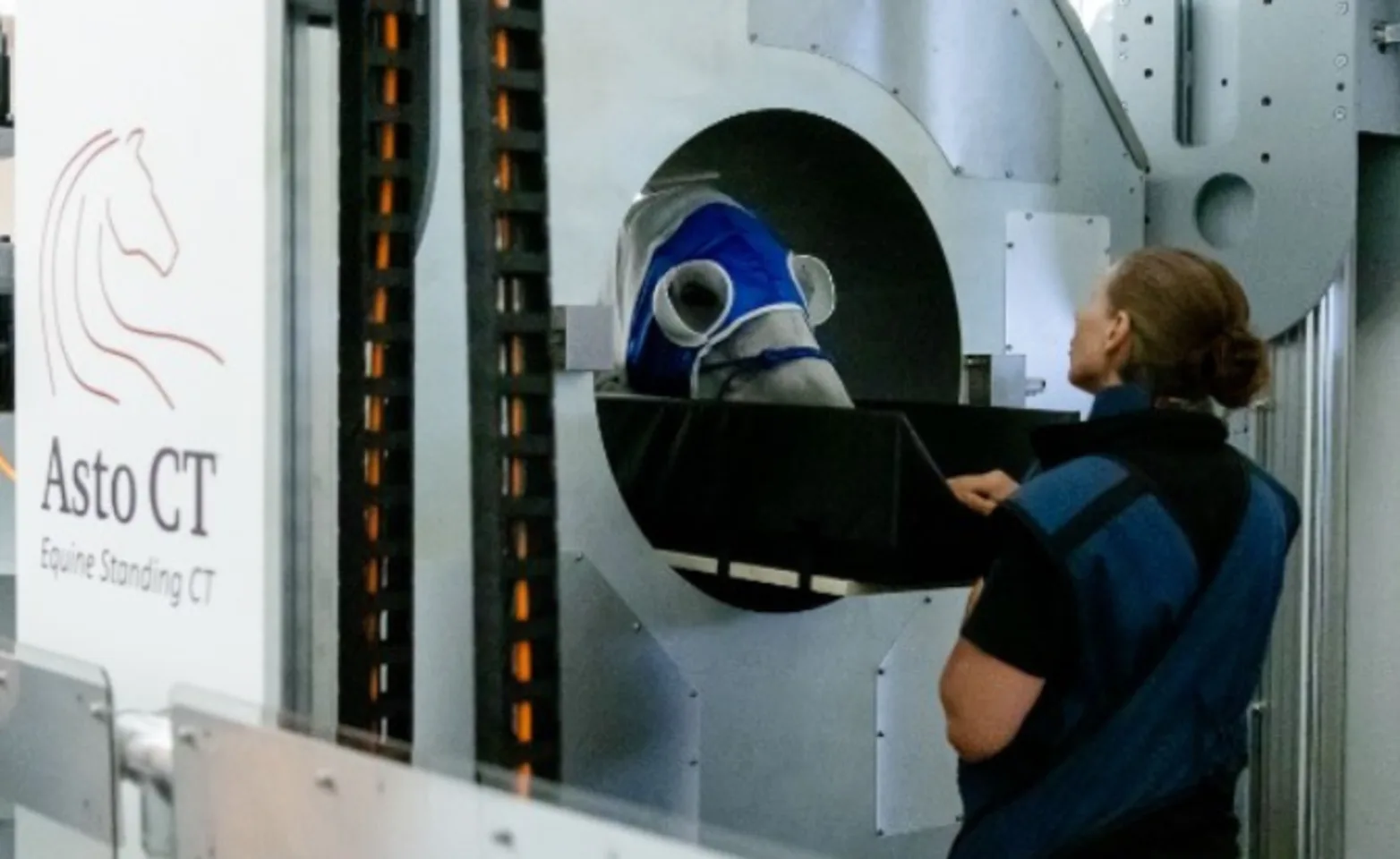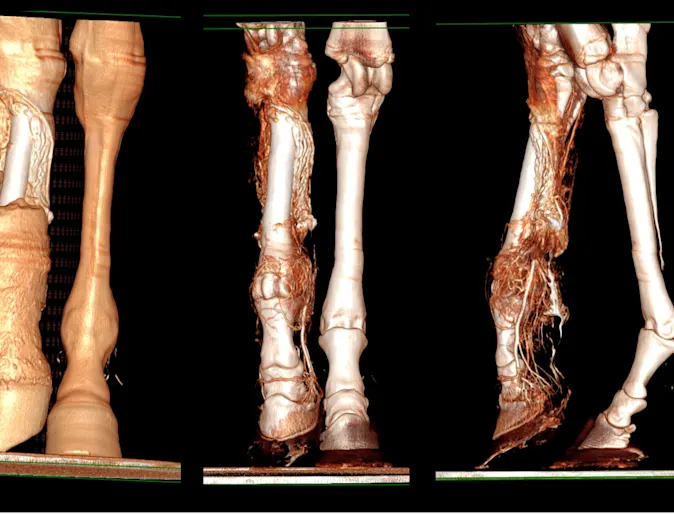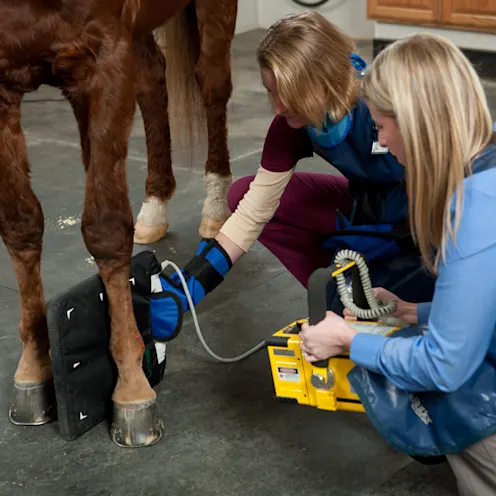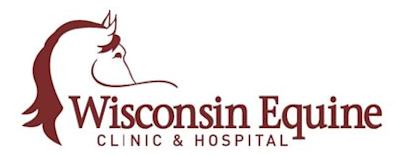Watch this video to see our new CT at work in hospital and learn about how we can use this technology to best treat your horses.
Wisconsin Equine Clinic & Hospital (WECH)
We're excited to share with our community that Wisconsin Equine Clinic & Hospital has partnered with Asto CT to introduce cutting-edge Computed Tomography (CT) technology to our practice. Construction completed in August 2024 and we are now booking for your horse's CT needs. WECH strives to offer compassionate care and individualized treatment to our community; with our new standing CT clients will receive a fast diagnosis through high quality images that can be acquired within 15 minutes.

Individualized Equine Care
Dr. Douglas Langer, DVM, MS, Chief Veterinarian at WECH states, “We strive to maximize the quality of life for our equine patients by providing compassionate care with the utmost attention to the individual needs of the horse and the clients we serve. This is why we are thrilled to partner with Asto CT to introduce their state-of-the-art technology, the Asto CT Equina®, into our practice. This groundbreaking CT scanner sets a new standard in equine diagnostic imaging, enabling us to offer even more precise and comprehensive care to our patients. With the Equina®, we can ensure that every horse receives the best possible treatment tailored to their individual needs.”

Why Horse Owners Love the Asto CT Equina®:
Developed specifically for imaging both limbs simultaneously and the head & neck region in a mildly sedated standing equine patient, the Equina® is the world’s first dual-axis fan-beam computed tomography (CT) scanner. Your horse can maintain a natural standing position throughout the scan, eliminating the need for general anesthesia and reducing anxiety, ensuring a safe and more comfortable experience.

Unrivaled Precision
Computed Tomography (CT) is a noninvasive cross-sectional imaging modality that produces a 3D image of the scanned body part. It’s uses range from diagnosing bone injuries and complex fractures not visible on radiographs, screening horses for stress fracture pathologies before an athletic event, prepurchase exams, diagnosing soft tissue injuries such as tendon lesions, identifying thoracic or pelvic limb lameness, diagnosing diseases of the head, sinuses, teeth and jaw, surgical guidance, diagnosing neck issues such as osteoarthritis and more!
Case Studies
From clinics currently utilizing AstoCT equipment, Wisconsin Equine specific examples coming soon!

Fractured Navicular Bone
Percheron draft gelding with chronic right front limb lameness for over a year was diagnosed via Equine CT with a fracture in the lateral wing of the navicular bone, confirming the source of lameness.

Dental Draining Tracts
18-year-old Thoroughbred cross mare had a persistent draining tract due to a bone sequestrum. Surgical debridement successfully removed most of the necrotic bone, resolving the issue and aiding healing.

Distal Limb Perfusion
Yearling Warmblood filly suffered a degloving injury to the dorsal right hind metatarsus. A contrast CT was used to evaluate distal limb perfusion, guiding treatment to manage swelling and support healing.
Diagnostic Imaging Offered at Wisconsin Equine Clinic
STANDING MRI - DIGITAL RADIOGRAPHY - DIGITAL ULTRASOUND - ENDOSCOPY - GASTROSCOPY - CT




